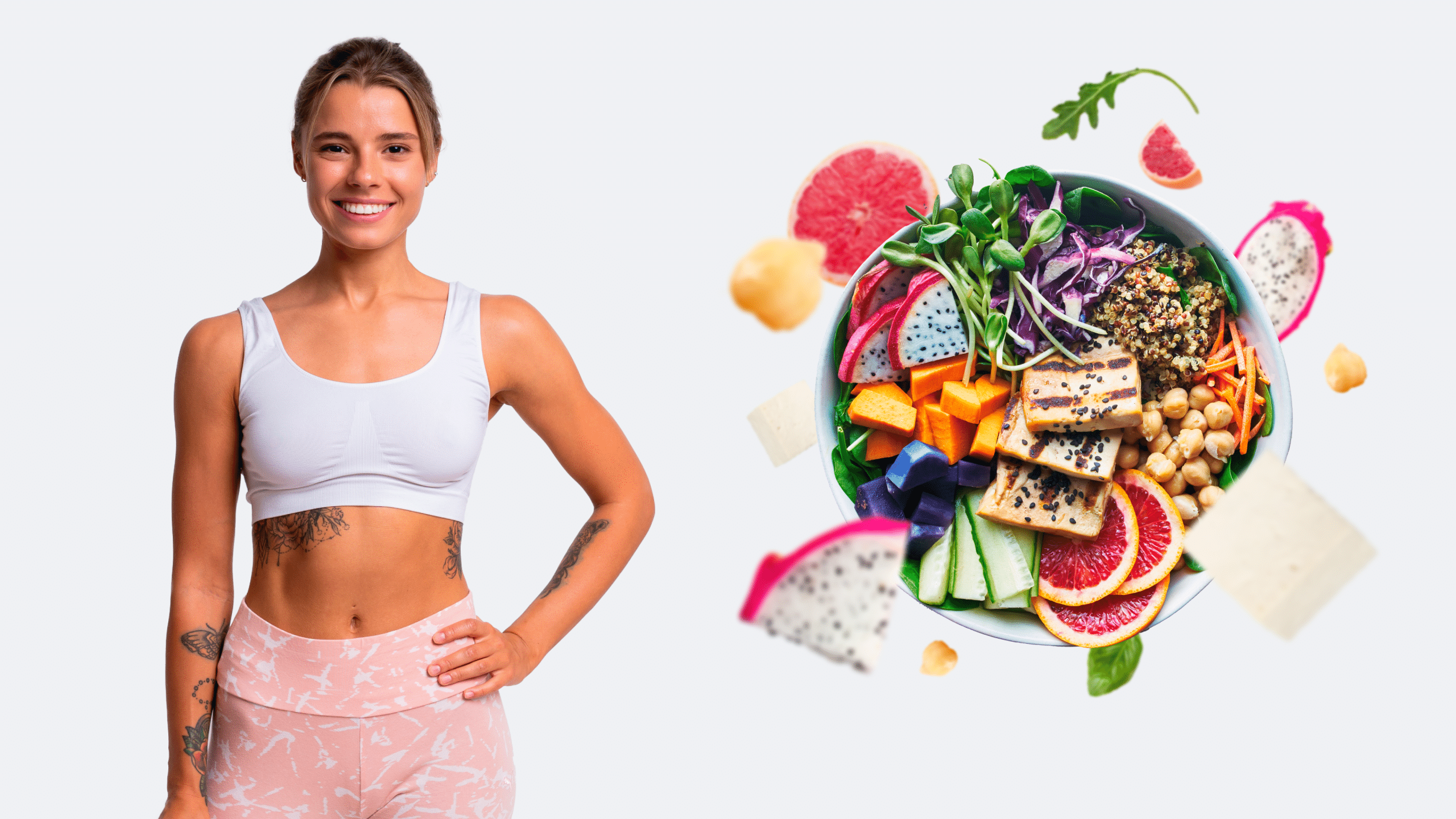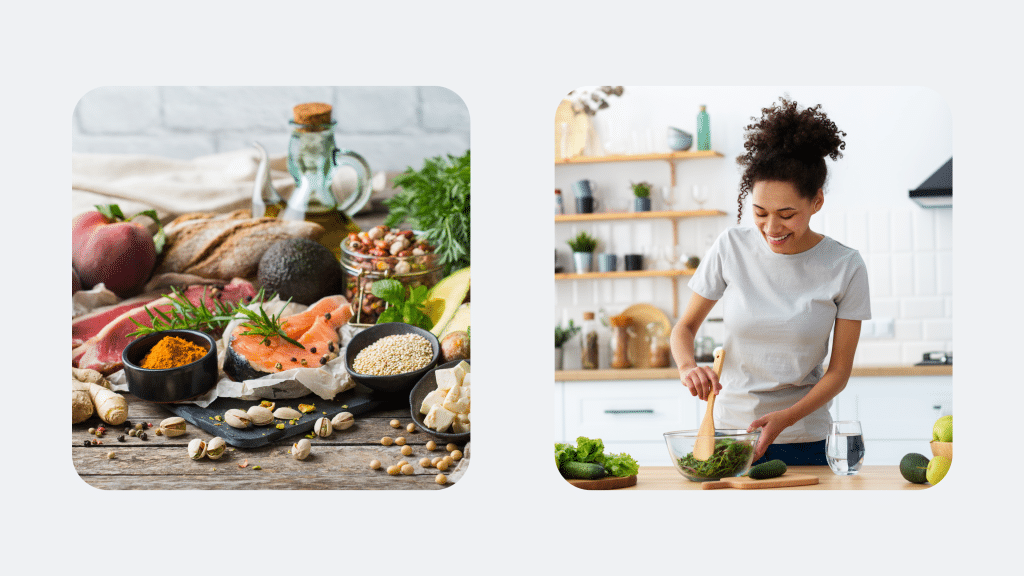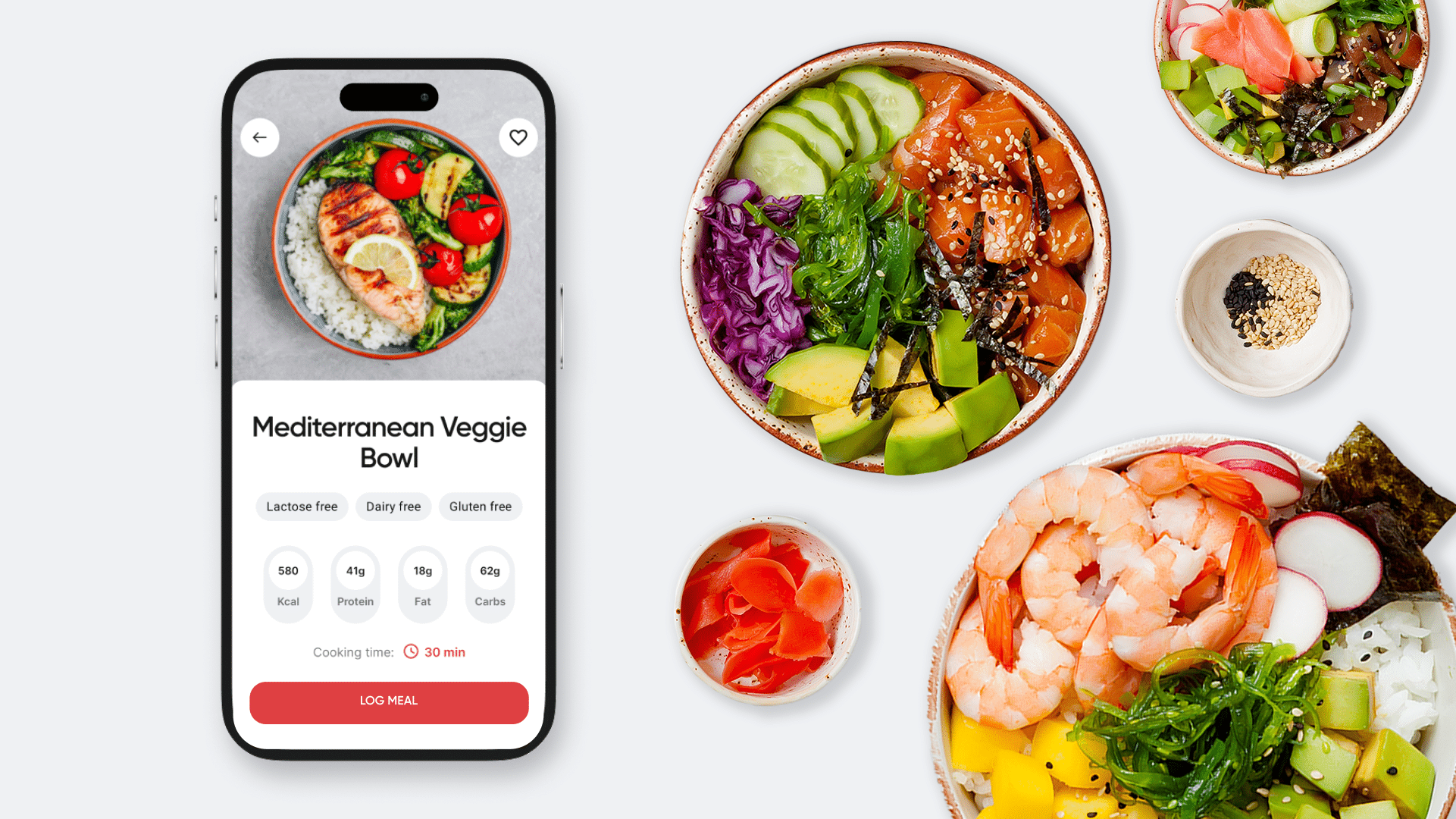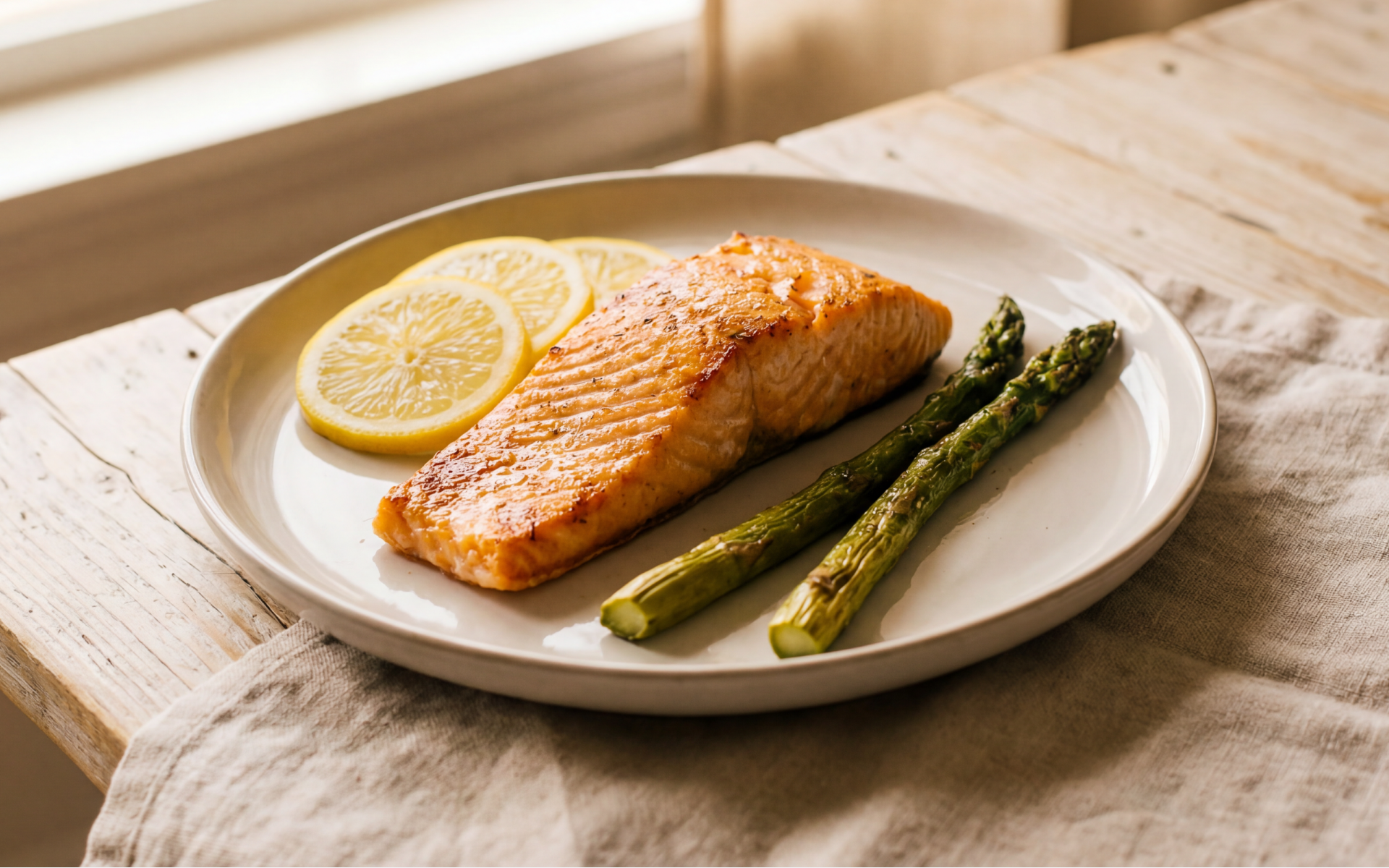Discover the Rainbow Diet
You may have heard the phrase ‘eat the rainbow’ or seen the ‘rainbow diet’ written or spoken about. While it may seem like just another trend or phase, there is quite compelling evidence to support the notion of the rainbow diet. This concept includes various colorful foods such as fruits and vegetables. On a population level, the consumption of fruit and vegetables is lacking, and most people don’t meet the basic daily requirements. Inadequate intake of fruit and vegetables can have a significantly negative effect on health in both the short and long term. The rainbow diet aims to encourage a healthy eating pattern and further support and promote optimal health while contributing to a reduced risk of disease. Continue reading to learn about this simple yet effective concept, which is not just another restrictive diet. Instead, it fosters healthy eating habits and patterns for optimal health and well-being.
The Concept of the Rainbow Diet
Understanding the Principles of the Rainbow Diet
The principles of the rainbow diet are quite simple. This positive eating concept is built on the foundation of fruits and vegetables being grouped into five prominent categories based on their colors. The different colors of each category all provide distinct characteristics, including beneficial compounds called phytochemicals. Phytochemicals are what give each category its unique color. Eating a rainbow is a concept that encourages and promotes a variety of fruits and vegetables (3).
The Nutritional Spectrum of the Rainbow Diet
Red Foods: Energizing and Revitalizing
Red Foods and Inflammation
Red foods contain antioxidants and red-food carotenoids such as the compounds astaxanthin and lycopene. These compounds have been found to provide anti-inflammatory properties and further, help to regulate the immune system. In addition, these foods are high in vitamin C, which is an essential nutrient that plays a role in the immune system (1).
The table below shows some examples of different fruits and vegetables from the red category. It also shows the different phytochemical compounds that are present and some of the primary physiological effects they can have.
| Fruits | Vegetables |
|---|---|
| Apples Cherries Blood oranges Cranberries Lingonberries Nectarines Pink grapefruit Pomegranate Raspberries Red currants Red pears Red plums Strawberries Watermelon | Radicchio Radishes Red beets Red bell peppers Red cabbage Red chard Red jalapeño peppers Red onions Red potatoes Tomatoes |
| Phytochemicals | Physiological Effects |
| Anthocyanins Carotenoids Ellagic acid Ellagitannins Fisetin Flavones Lycopene Phloretin Quercetin | Anti-inflammatory General antioxidant activity Immune modulation |
Orange and Yellow Foods: Boosting Vitality
Orange Foods and Reproductive Health: Orange foods are rich in carotenoids, which help regulate the endocrine system. They play an important role in reproductive health by supporting processes such as ovulation.
Yellow Foods and Digestion: Yellow foods are packed with fiber and promote a healthy gut. They contribute to gastrointestinal health by improving gastric motility and enhancing digestive secretions (1).
In the table below are some examples of different fruits and vegetables from the orange and yellow category. Also listed are the different phytochemical compounds that are present and some of the primary physiological effects they can have.
| Fruits | Vegetables |
|---|---|
| Apricots Blood oranges Cantaloupe Kumquat Mandarins Mangoes Nectarines Oranges Papaya Passion fruit Peaches Persimmons Tangerines | Carrots Orange bell peppers Pumpkin Sweet potatoes Turmeric Yams |
| Phytochemicals | Physiological Effects |
| Alpha-carotene Beta-carotene Beta-cryptoxanthin Bioflavonoids Carotenoids Curcuminoids | Antioxidant for fat-soluble tissues Endocrine modulation Role in ovulation and fertility processes |
Green Foods: Promoting Balance and Wellness
Green Foods and Cardiovascular Health: Green foods are loaded with nutrients that support heart health, such as vitamin K, folate, magnesium, potassium, and dietary nitrates (1).
In the table below are some examples of different fruits and vegetables from the green category. Also listed are the different phytochemical compounds that are present and some of the primary physiological effects they can have.
| Fruits | Vegetables |
|---|---|
| Avocados Green apples Limes Olives Pears | Artichokes Asparagus Bamboo sprouts Bean sprouts Bell peppers Bitter melon Bok choy Broccoli Broccolini Brussels sprouts Cabbage Celery Cucumbers Edamame Green beans Green peas Greens (beet, chard, collards, dandelion, kale, lettuce, mustard, spinach, turnip) Okra Rosemary and other herbs Snow peas Watercress |
| Phytochemicals | Physiological Effects |
| Catechins Chlorogenic acid Chlorophyll Epigallocatechin gallate Flavonoids Folates Glucosinolates Isoflavones Isothiocyanates L-theanine Nitrates Oleocanthal Oleuropein Phytosterols Silymarin Sulforaphane Tannins Theaflavins Tyrosol Vitexin | Antioxidant Blood vessel support Role in healthy circulation and methylation |
Research Overview
At least 14 studies have investigated the link between leafy green vegetable intake and the risk of disease. Predominant areas of consideration are cardiovascular diseases (CVD), atherosclerotic vascular disease (ASVD), coronary heart disease (CHD), heart disease, or stroke. Of all the varieties of green vegetables, spinach and lettuce are the most frequently included leafy greens in these studies. Most studies found there to be a significant inverse relationship between the consumption of leafy green vegetables and cardiovascular disease outcomes (2).
Yanking yourself back in shape has never been so easy with our game-changing fitness app! Start transforming your life with BetterMe !
Blue and Purple Foods: Enhancing Cognitive Function
Blue-Purple Foods and Cognition: Blue and purple foods are high in polyphenols, which enhance cognitive functions such as learning, memory, and mood. They contain beneficial compounds such as flavonoids, procyanidins, flavonols (including kaempferol, quercetin, and myricetin), phenolic acids (primarily hydroxycinnamic acids), and stilbene derivatives (1).
In the table below are some examples of different fruits and vegetables from the blue and purple category. Also listed are the different phytochemical compounds that are present and some of the primary physiological effects they can have.
| Fruits | Vegetables |
|---|---|
| Blackberries Blueberries Boysenberries Figs Huckleberries Prunes Purple grapes Raisins | Eggplant Plums Purple bell peppers Purple cabbage Purple carrots Purple cauliflower Purple kale Purple potatoes |
| Phytochemicals | Physiological Effects |
| Anthocyanidins Flavonoids Phenolic acids Proanthocyanidins Pterostilbene Resveratrol Stilbenes | Antioxidant Cognitive support Healthy mood balance Role in neuronal health |
Adopting the Rainbow Diet in Everyday Life: Tips for Integrating More Colors into Your Diet
Eating the rainbow can be made simple and exciting when trying out new foods, recipes, and ways to enjoy your meals. Here are some tips for integrating more colors into your diet to ensure a variety of nutrients and health benefits.
- Plan Colorful Meals
Make a conscious effort to include a variety of colors in every meal. Use fruits and vegetables of different colors to create a vibrant and appealing plate.
- Mix It Up
Combine different types of fruits and vegetables in salads, stir-fries, and smoothies. This adds color and a range of flavors and textures.
- Snack Smart
Choose colorful fruits and vegetables as snacks. Carrot sticks, bell pepper slices, cherry tomatoes, berries, and apple slices are all great options.
- Try New Recipes
Experiment with recipes that incorporate a variety of colorful ingredients. Look for dishes from different cuisines that feature an array of fruits and vegetables.
- Use Herbs and Spices
Fresh herbs such as parsley, cilantro, and basil, and spices such as turmeric and paprika can add vibrant colors and enhance the flavor of your dishes.
- Get Creative With Your Garnishes
Use colorful garnishes such as pomegranate seeds, chopped green onions, and grated beetroot to add variety and further enhance the nutritional content of your meals.
Read more: 7-Day Weight Loss Low-Carb Diet: Choose High-Protein, High-Fiber, or Ultra-Low-Carb
- Smoothie Bowls
Create smoothie bowls with a base of blended fruits and vegetables and top them with an assortment of colorful fruits, nuts, seeds, and granola.
- Roast a Rainbow
Roast a mix of colorful vegetables such as sweet potatoes, bell peppers, zucchini, and beets. Roasting brings out the natural sweetness and enhances the colors.
- Grow Your Own
Grow a variety of colorful fruits and vegetables in your garden. Homegrown produce is fresh and you can control the variety you plant.
- Shop Seasonally
Purchase fruits and vegetables that are in season as they tend to be more colorful, flavorful, and nutrient-dense.
By incorporating various colors into your diet, you can enjoy a broader range of nutrients and make your meals more visually appealing and enjoyable.
Simple and Delicious Rainbow Diet Recipes
Here are some simple and delicious rainbow diet recipes to help you incorporate more colors into your meals:
Rainbow Vegetable Stir-Fry
Ingredients:
- Red bell pepper, sliced
- Orange carrots, thinly sliced
- Yellow bell pepper, sliced
- Green broccoli florets
- Blue-purple cabbage, shredded
- 1 tbsp soy sauce
- 1 tbsp olive oil
- 1 clove garlic, minced
- 1 tsp ginger, grated
Instructions:
- Heat the olive oil in a large pan over medium heat.
- Add the garlic and ginger and sauté for 1 minute.
- Add all the vegetables and stir-fry for 5-7 minutes until tender.
- Pour in the soy sauce and stir to coat the vegetables evenly.
- Serve over brown rice or quinoa.
Colorful Quinoa Salad
Ingredients:
- 1 cup quinoa, cooked
- 1 cup cherry tomatoes, halved
- 1 yellow bell pepper, diced
- 1 cucumber, diced
- 1/2 red onion, finely chopped
- 1 cup chickpeas, drained and rinsed
- 1/4 cup fresh parsley, chopped
- Juice of 1 lemon
- 2 tbsp olive oil
- Salt and pepper to taste
Instructions:
- Combine the cooked quinoa, cherry tomatoes, bell pepper, cucumber, red onion, and chickpeas in a bowl.
- Whisk together the lemon juice, olive oil, salt, and pepper in another bowl.
- Pour the dressing over the salad and toss to combine.
- Garnish with fresh parsley before serving.
If you wish to cinch your waist, tone up your bat wings, blast away the muffin top – our fitness app was created to cater to all your needs! BetterMe won’t give excess weight a chance!
Berry and Spinach Smoothie
Ingredients:
- 1 cup spinach
- 1/2 cup blueberries
- 1/2 cup strawberries
- 1/2 banana
- 1 cup almond milk
- 1 tbsp chia seeds
Instructions:
- Combine all ingredients in a blender.
- Blend until smooth and creamy.
- Pour into a glass and enjoy.
Tropical Fruit Salad
Ingredients:
- 1 mango, diced
- 1 cup pineapple, diced
- 1 kiwi, sliced
- 1 orange, segmented
- 1/2 cup pomegranate seeds
- 1 tbsp fresh mint, chopped
- Juice of 1 lime
Instructions:
- Combine all the fruits in a large bowl.
- Add the fresh mint and lime juice and gently toss to combine.
- Serve immediately or refrigerate until ready to eat.
Roasted Vegetable Medley
Ingredients:
- 1 red bell pepper, chopped
- 1 sweet potato, diced
- 1 zucchini, sliced
- 1 purple onion, chopped
- 1 tbsp olive oil
- 1 tsp dried thyme
- Salt and pepper to taste
Instructions:
- Preheat the oven to 400°F (200°C).
- Place all the chopped vegetables on a baking sheet.
- Drizzle with olive oil and sprinkle with thyme, salt, and pepper.
- Toss to coat the vegetables evenly.
- Roast for 25-30 minutes until tender and slightly browned.
- Serve as a side dish or over a bed of greens.
These recipes are simple to make and are also jam-packed with an array of colorful fruits and vegetables. They will help you enjoy more foods while enhancing the nutritional value of your meals and enabling you to obtain many positive health benefits.
Evidence-Based Benefits of the Rainbow Diet
Research Supporting the Benefits of Colorful Foods
Eating plenty of fruits and vegetables has long been recommended for supporting good health and well-being, including healthy body weight, and for helping prevent many chronic diseases such as cardiovascular disease and some cancers. However, there is still some uncertainty regarding the optimal amounts and types of fruits and vegetables that best reduce the risk of these diseases and overall mortality.
A meta-analysis of 95 studies (142 publications) observed the combined intake of fruits and vegetables per day in grams. The results found consuming up to 800 grams to be linked to a lower risk of cardiovascular disease and overall mortality. However, no additional benefit was seen for cancer prevention beyond 600 grams per day.
Interestingly, the study found specific fruits and vegetables such as apples, pears, citrus fruits, green leafy vegetables, and cruciferous vegetables to be associated with lower risks of cardiovascular disease and mortality. Furthermore, the intake of green and yellow and cruciferous vegetables was found to be linked to a reduced risk of total cancer.
If the associations in this study are causal, it’s estimated that a low fruit and vegetable intake (below 500 grams and 800 grams per day) could significantly influence health and disease outcomes (4).
A review article highlighted some interesting areas when examining the consumption of colorful fruits and vegetables in your diet (1). Some recently observed benefits include:
- A diet that is rich in plant compounds can help counteract the toxicity of environmental pollutants and support psychological well-being.
- Higher fruit and vegetable intake is associated with reduced psychological distress and enhanced feelings of curiosity, happiness, and creativity.
Another review that analyzed 86 studies and data from over 37 million people provided a comprehensive overview of the health effects of bioactive pigments (9).
The outcomes highlighted that:
- Consuming a variety of colorful fruits and vegetables helps meet nutritional needs and offers unique health benefits that are linked to the specific bioactive pigments in each color.
- Incorporating a variety of these colorful foods may have synergistic effects that enhance overall health.
- Dietary guidelines that recommend regularly eating a diverse range of fruits and vegetables are incredibly important.
- This approach ensures the intake of various beneficial compounds, which contributes to better health outcomes across different populations.
Read more: 24 Weight Loss Smoothies, 2 Diet Plans, and 5 Belly Fat Smoothie Secrets
Overcoming Challenges with the Rainbow Diet
Ensuring Nutrient Balance Across Different Colors
Variety is important when attempting to ensure nutritional balance across different colors in the rainbow diet.
While colorful plates of food are attractive, ensuring balanced nutrition from all major food groups is still essential for optimal nutrition. Simply eating a variety of colors doesn’t automatically guarantee balanced nutrition, although the natural compounds (phytochemicals) in fruits and vegetables are beneficial. Many of these phytochemicals act as antioxidants, which may help protect against free radicals and are linked to lower rates of cardiovascular disease (8). Consuming a wide range of foods helps you imbibe essential nutrients that naturally include a variety of colors. Following this pattern will help support the goal of eating five portions of fruits and vegetables a day.
Addressing Common Misconceptions and Myths
Eating a Variety of Colors Guarantees Complete Nutrition
Reality: A variety of colorful fruits and vegetables is beneficial, but it doesn’t automatically lead to a complete nutritional intake. While adequate fruit and vegetable intake is important for good health and well-being, a balanced diet also requires other key food groups. It’s essential to include proteins, whole grains, and healthy fats to ensure a balanced and complete diet (7).
Fresh Fruits and Vegetables Are Best
Reality: Frozen and canned fruits and vegetables can be just as nutritious as fresh ones, sometimes even more so. This is due to the quick-freezing process that preserves most nutrients while nutritional content can diminish over time with fresh fruit and vegetables (7).
You Need to Eat All the Colors Every Day
Reality: It’s not necessary to consume every color daily. Incorporating a variety of colors throughout the week will ensure a broad spectrum of nutrients, as long as you meet the daily fruit and vegetable requirements (7).
The Rainbow Diet Is Just a Trend
Reality: The rainbow diet is based on rigorous nutritional science. Emphasizing a variety of colorful fruits and vegetables helps reduce the risk of chronic diseases and supports overall well-being (7).
FAQs
What foods are included in the rainbow diet?
Fruits and vegetables are the main food groups included in the rainbow diet, but it expands further to other key foods, including legumes, grains, nuts, seeds, and herbs and spices.
How does the rainbow diet improve overall nutrition?
The rainbow diet improves overall nutrition by increasing the intake of essential nutrients, dietary fiber, and protective compounds such as phytochemicals and antioxidants. The regular consumption of a variety of colorful foods supports optimal physical and mental health, which promotes long-term well-being and positive health outcomes.
Can the rainbow diet help with energy levels?
Yes, the rainbow diet can help with energy levels. In simple terms, fruits and vegetables provide essential nutrients that contribute to energy production (6).
For example:
- Carbohydrates in fruits such as bananas and berries offer quick energy.
- B vitamins in leafy greens, beans, and peas are essential for converting food into energy.
- Iron in spinach and lentils helps transport oxygen in the blood, which is essential for maintaining energy levels.
- Magnesium, which is found in avocados and bananas, is necessary for energy production and muscle function.
- Antioxidants in brightly colored fruits and vegetables help reduce oxidative stress, potentially improving overall energy and reducing fatigue.
Eating a variety of colorful fruits and vegetables will ensure you get a diverse range of these and other essential nutrients. This supports and contributes toward steady energy levels throughout the day.
Are there specific guidelines to follow on the rainbow diet?
There are no strict guidelines for the rainbow diet; it is a diet methodology that encourages individuals to include more plant foods in their diet. Consider including an array of foods from fruits, vegetables, legumes, whole grains, nuts, seeds, and herbs and spices.
How can I easily incorporate the rainbow diet into my daily routine?
You can easily start incorporating the rainbow diet into your daily routine by thinking about what fruits and vegetables you most enjoy. From there, you can also consider the easiest way to include those foods in your meals. Some simple strategies include:
- Snack on fruit throughout the day.
- Chop up vegetables such as carrots and enjoy them with dips such as hummus.
- Include unsalted nuts as a healthy snack or add them to your meals.
- Get creative with breakfast toppings by adding berries such as blueberries and seeds such as chia or flax to your morning oats or yogurt.
- Prepare a colorful salad with a mix of greens, tomatoes, bell peppers, and other vibrant vegetables.
- Add a side of steamed or roasted vegetables to your lunch or dinner.
- Make smoothies using a variety of fruits and throw in some leafy greens for extra nutrients.
- Stir-fry a mix of vegetables for a quick and easy dinner.
- Incorporate a variety of vegetables into soups, stews, and casseroles.
- Keep a bowl of fresh, colorful fruit on your kitchen counter for easy access.
Is the rainbow diet suitable for children and older adults?
Yes, the rainbow diet is suitable for children and older adults. The rainbow diet is suitable for all individuals as it underpins the basic dietary guidelines of promoting and eating an adequate amount of fruits and vegetables.
The Bottom Line
The rainbow diet supports optimal health and well-being, which provides physical and mental benefits while reducing the risk of disease.
DISCLAIMER:
This article is intended for general informational purposes only and does not serve to address individual circumstances. It is not a substitute for professional advice or help and should not be relied on for making any kind of decision-making. Any action taken as a direct or indirect result of the information in this article is entirely at your own risk and is your sole responsibility.
BetterMe, its content staff, and its medical advisors accept no responsibility for inaccuracies, errors, misstatements, inconsistencies, or omissions and specifically disclaim any liability, loss or risk, personal, professional or otherwise, which may be incurred as a consequence, directly or indirectly, of the use and/or application of any content.
You should always seek the advice of your physician or other qualified health provider with any questions you may have regarding a medical condition or your specific situation. Never disregard professional medical advice or delay seeking it because of BetterMe content. If you suspect or think you may have a medical emergency, call your doctor.
SOURCES:
- A Review of the Science of Colorful, Plant-Based Food and Practical Strategies for “Eating the Rainbow” (2019,nih.gov)
- Cardiovascular Health Benefits of Specific Vegetable Types: A Narrative Review (2018, nih.gov)
- Eat A Rainbow (2021, nutritionaustralia.org)
- Fruit and vegetable intake and the risk of cardiovascular disease, total cancer and all-cause mortality—a systematic review and dose-response meta-analysis of prospective studies (2017, nih.gov)
- Fruits, vegetables, and health: A comprehensive narrative, umbrella review of the science and recommendations for enhanced public policy to improve intake (2020,nih.gov
- Fruits and Vegetables (2022, betterhealth.vic)
- Nutrition Myths Debunked (2020,wfp.org)
- Should We ‘Eat a Rainbow’? An Umbrella Review of the Health Effects of Colorful Bioactive Pigments in Fruits and Vegetables (2022, nih.gov)
- Should you eat a rainbow of fruits and vegetables? (nd, bhf.org)













